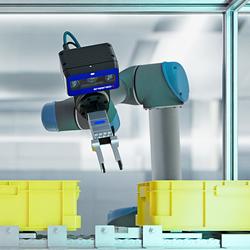Robot Octopus Takes to the Sea
From Evan Ackerman at IEEE Spectrum:
The video below has four parts to it: the first shows the difference between the robotic octopus swimming with just flexible arms, and swimming with just flexible arms in addition to a web. The most obvious difference is the speed: just over 100 millimeters per second with arms only, and up to 180 mm/s (or 0.5 body lengths per second) with the web. This is a significant increase, obviously, but what's more important is the overall cost of transport (CoT), which is a measure of the efficiency of the robot (specifically, the ratio of the energy put in over the resulting speed). The CoT for the arms-only version is 0.85, whereas the web drops that down to 0.62. So yeah, having that web in there is better in almost every way... (cont'd)
Featured Product

